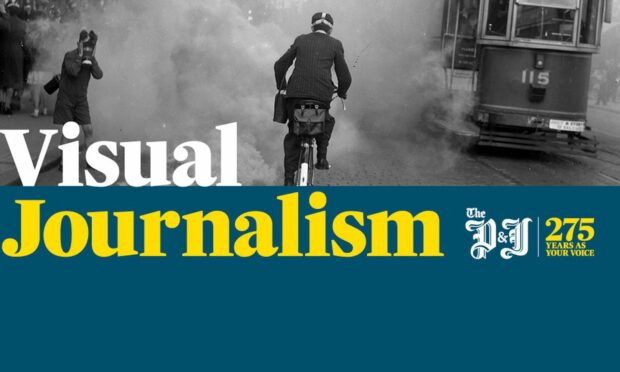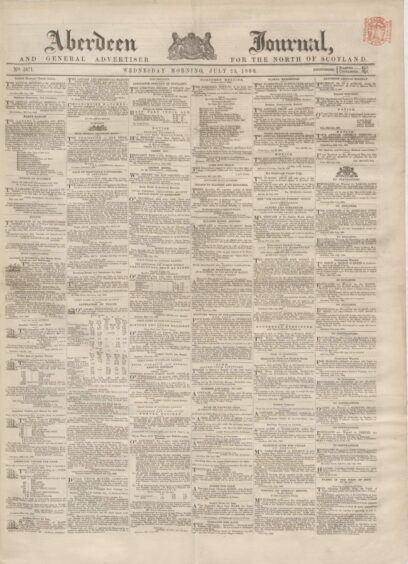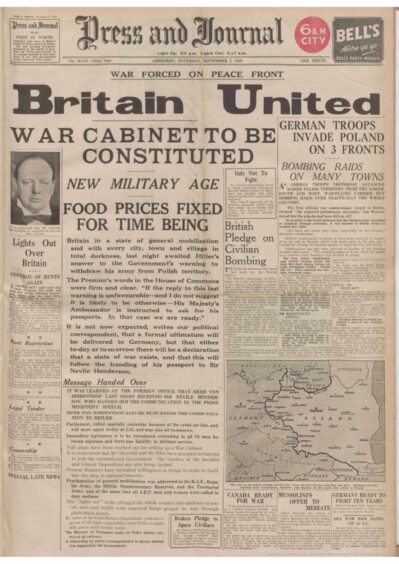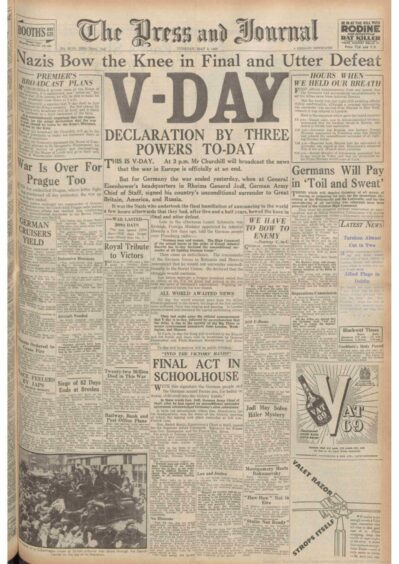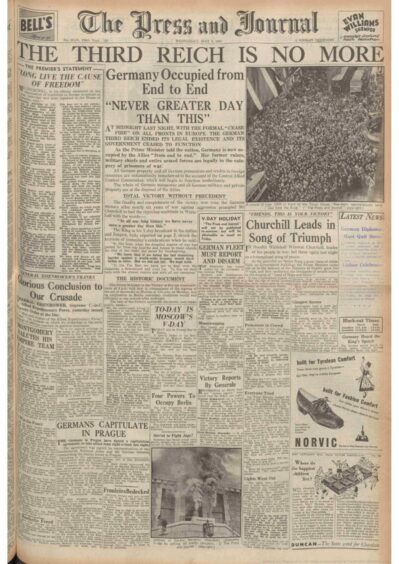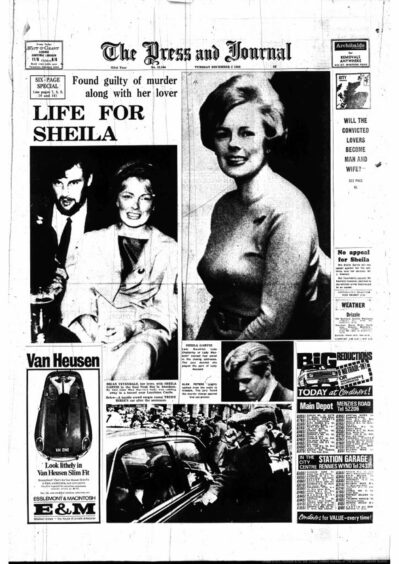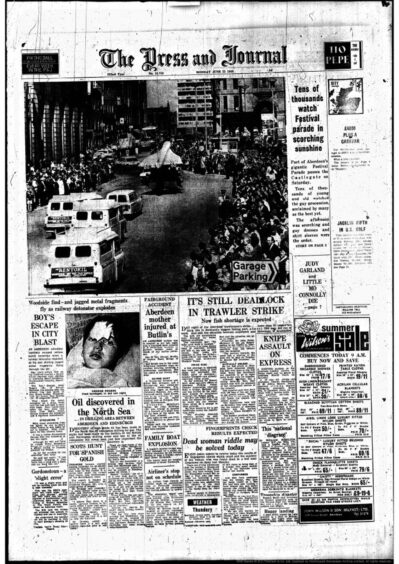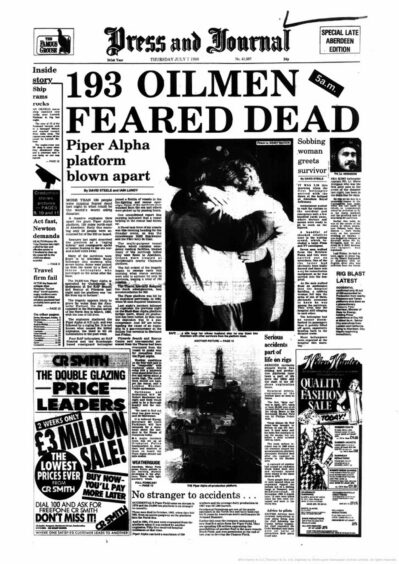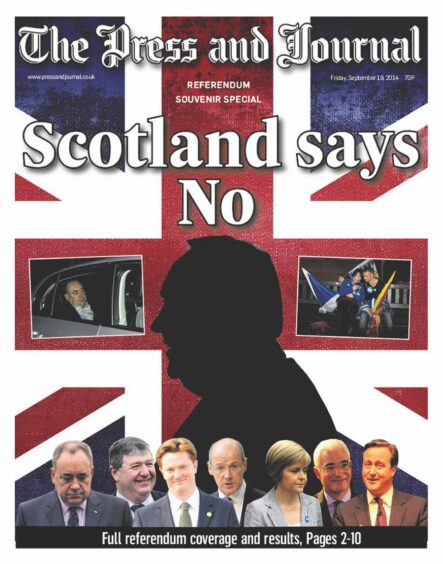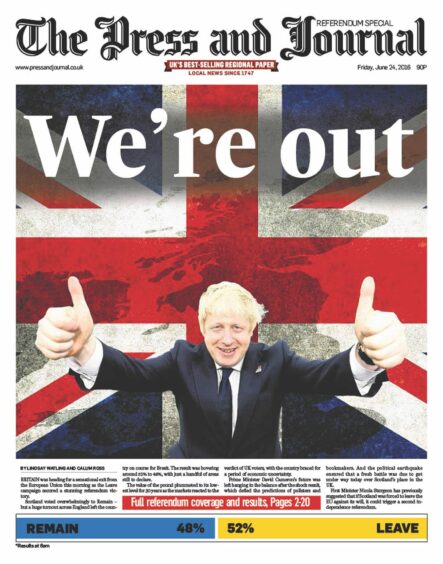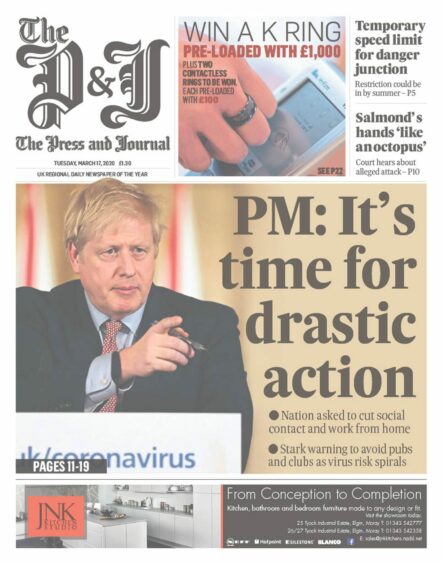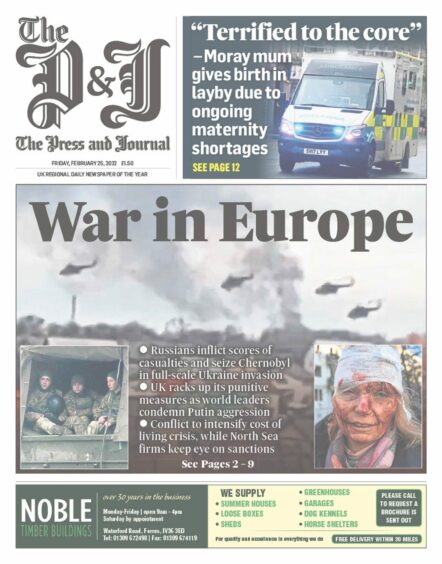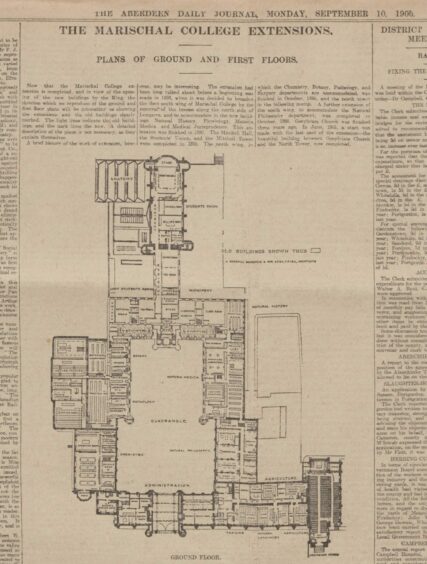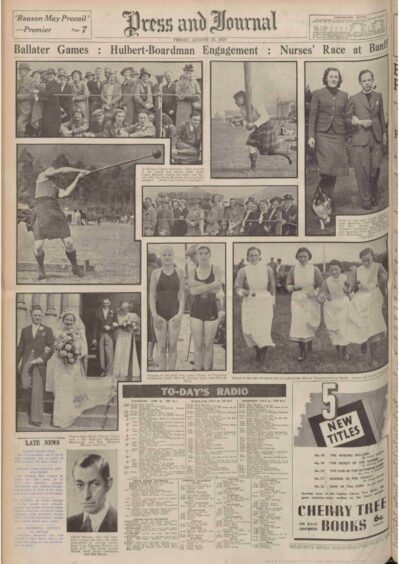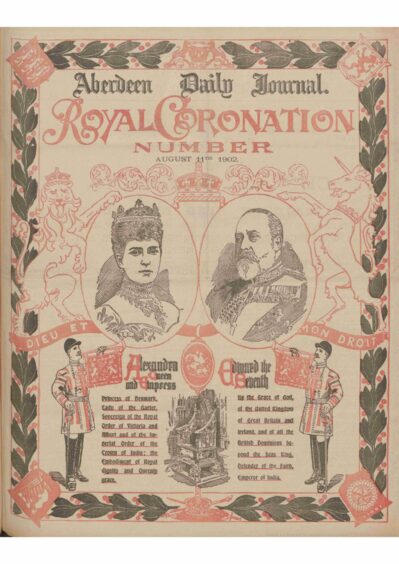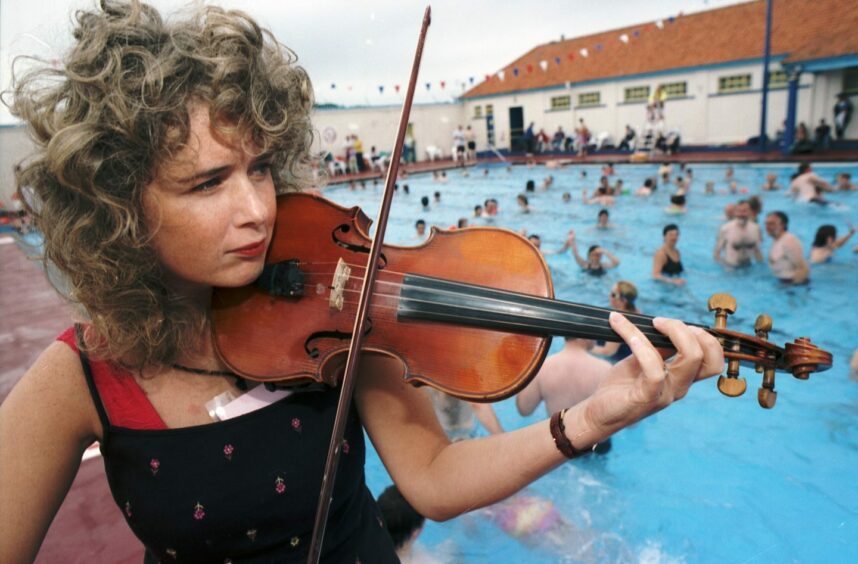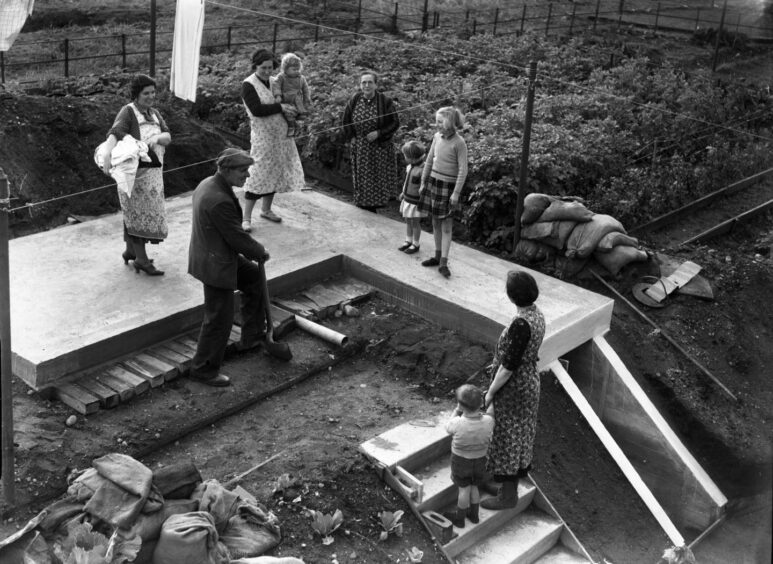Pictures speak 1,000 words and have been integral in the way The Press and Journal has delivered the news for almost three centuries.
Advances in technology, cameras, printing and developing images, alongside the move from print to online journalism, have changed the way our stories have been told through photography over the years.
From advertisements to illustrations, the introduction of photographs at the turn of the 20th Century injected a new lease of life into our pages.
Black and white images appeared at first, followed by colour pictures in the 1990s.
And today, as we have taken the news online, readers are now treated to moving images and videos which greatly enhance content that’s in the palms of their hands.
These visual elements in our storytelling mark a moment in time as told through the lens of a photographer or the artistry of an illustrator.
The introduction of creative ways to report the news helps fire the imaginations of our readers and puts them at the centre of the story.
This month, we look back at the best of our visual journalism and at how the tools we have used to tell the most compelling stories in print and online have evolved.
Front page news
The front page of The Press and Journal has come a long way over the years.
Initially, it was filled with foreign news and intelligence, but it soon included prominent advertising space, the revenues from which helped to keep down the cost of the newspaper for readers.
In 1939, headlines as we now know them were introduced, allowing readers’ eyes to instantly locate news of interest to them.
Notable front covers
News of national and international importance has become an essential factor in our lives, and the front page has always been the place to carry the most important news of the day.
Have a look back at some of our notable front covers down the years.
Introduction of illustrations
From the 1880s, advances in printing meant we were able to start introducing small line drawings into our stories to help illustrate the people and places being described.
The drawings took a high level of skill to create and were considerably time-consuming – and time on newspaper schedules is always tight!
Line drawings
Line drawings used in the paper to illustrate new proposed buildings in Aberdeen – the Aberdeen Art Gallery in 1884 and the Crown Street Post Office in 1902.
Marischal College extension
On September 6 1906, layout drawings of the Marischal College extension were printed in the paper.
This was a feat of technical engraving to get such clear and detailed reproductions.
Storytelling through photography
The advent of photography was a turning point in the way we could tell stories. Bringing immediacy to support our words, we began to use photographs in the paper from the first decade of the 1900s. Initially, these were studio-style portraits of notable individuals.
As photography became quicker and easier, we employed our own photographers to visit people and locations to take images to complement our reports.
From the 1960s onwards, though, photographs would often be the story – either through image-led journalism or small feature pieces where a photo of a community event or personality was accompanied by a caption.
Introduction of photography
In a supplement issued on January 10 1906, photographs of the general election candidates for north-east constituencies were printed. The election took place between January 12 and February 8.
Early usage of photography in the paper
Throughout the first half of the 20th Century, the use of photography in the paper became more frequent. During the early to mid 1920s, the publication dedicated half a page every Saturday purely to photography to illustrate news stories from the north-east.
Increased use of photography
Starting with the 1960s, The Press and Journal began to contain a lot more images. There would be roughly 40 pictures per paper, a significant increase compared with previous decades.
More so than just increased usage of photography, these images started to focus on more diverse topics, places and people.
Previously, the few images added to the paper were mainly of the royal family, public or notable figures and important events, but now the images started to quite often display readers of the paper and various local goings-on.
Use of colour
Our first use of colour was in a 1902 coronation supplement. The effort and work involved in doing this was so great they resisted doing it again for many years.
Colour was slowly introduced from the 1960s onwards, and by the 1990s we were able to bring you a paper in full colour, most notably in photographic imagery.
The Royal Coronation
A “Royal Coronation Number” colour supplement to mark the coronation of Edward VII was issued with the greatest number of colours ever printed in a newspaper in Aberdeen. Colour wasn’t used in such a way again in the paper until 1963.
This was also the first three-colour paper printed in Aberdeen and involved a great many unpaid hours.
Colour photography
From the late 1980s, colour photography started to make its way into The Press and Journal, at first only occasionally, becoming more commonplace in the 1990s.
War time imagery
The Second World War saw the public turn to their trusted P&J for up-to-date news on developments, especially when their loved ones were serving away from home.
Imagery played a far greater role in our journalism than it had over the course of the First World War – technology had come on leaps and bounds and the advent of wire telephony meant pictures could be sent down phone lines, so images taken overseas could be used quickly.
Wired photography
The outbreak of the Second World War meant the paper became smaller as newsprint supplies diminished and costs increased. As a result, the full page of daily photography ceased to exist.
Images began to appear more regularly on the front page, particularly relating to the war.
The innovation of wirephoto technology, which allowed photography to be transmitted by electrical signals over telephone wires, meant the paper was able to use photography taken overseas for the first time to illustrate wartime news stories, sometimes from the front line.
Wartime glass plate negatives
Our collection of glass plate negatives that were taken by staff photographers during the Second World War tell the story of what Aberdeen and north-east communities endured. From conscription, women at work and rationing to air raids and eventually VE celebrations, our collection of images have been heavily featured in the paper over the years.
New ways of storytelling
Advances in technology made the telling of stories in new ways more accessible than ever. News in the palm of your hand, news on the go and live updates were concepts that were hard to believe until only recently.
Advances in videography and editing video footage quickly and easily have made it possible for us to give our audiences the most up-to-date news in ways that they choose – from video and pictures galleries to podcasts and even documentaries.
Missing from The Broch
Our 2021 documentary, Missing From The Broch, explored the circumstances surrounding the disappearance of Fraserburgh man Shaun Ritchie.
On Halloween night in 2014, Shaun Ritchie travelled in a van with seven other people to a remote farmhouse a few miles from Fraserburgh and was never seen again.
The best of our photography
A picture is worth 1,000 words – explore a selection of poignant photographs taken by The Press and Journal down the years in the gallery below.
The crowd gathering on Merkland Road East, Aberdeen, for the 1935 Aberdeen v Celtic football match.
Territorial training with search lights in Aberdeen in 1939.
Removing guns in front of Robert Gordons College.
Land army girls and Home Guard marching on parade.
Home Guard invasion exercise in Aberdeen.
World War II. Clement Attlee visits a lumber camp at Glenmuick.
The wreckage of the aircraft’s rear fuselage back on dry land having been hauled out of the water.
Smoke and flames pour from all that remains of the Piper Alpha platform.
Prince Harry, first official engagement in Aberdeen and Aberdeenshire, visits Transition Exreme.
Scottish Independence march in Aberdeen. From Albyn Place, down Union Street and to the Castlegate.
The first carriage ( engine ) being removed at the Stonehaven rail crash site crash site.
Drugs are seized in Buckie at the Highlander hotel by the Police Scotland Drug Squad.
